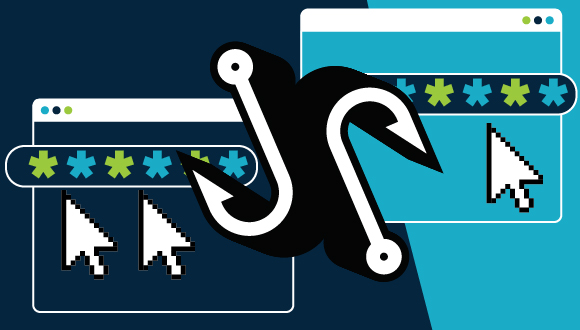July 8, 2020
The COVID-19 pandemic has created some unique challenges for cyber security. Staying cyber secure has never been more important.
 Be prepared for what’s out there
Be prepared for what’s out there
Like in any good action movie, the villains (or in this case, cyber attackers) often wait for a high-profile event to enact their big, evil plans.
The COVID-19 pandemic is that event — and unfortunately, cyber criminals are taking advantage of it. COVID-19-related scams and cyber attacks are on the rise. To keep yourself, your family and your devices safe, it’s important to stay aware of what’s out there and know how to avoid it.
What to watch out for
Phishing
Phishing messages are emails and text messages designed to trick you into giving up information or clicking a link that could infect your device.
COVID-19-related phishing attempts, particularly those pretending to be from healthcare organizations, are becoming more and more common. But while the subject matter might be different from an average phishing email or text message, the signs to look out for are the same.
Here are some resources to help you spot a phishing email:
- What is phishing?
- Phishing: Don’t take the bait!
- The 7 red flags of phishing
- Signs of a phishing campaign: How to keep yourself safe
- Cyber Hygiene for COVID-19
- Social Engineering: how cyber scams trick us
Malware
Malware is malicious software designed to infiltrate or damage a device.
With many people working from home during COVID-19, cyber criminals are looking for new opportunities. Be cautious when clicking links, downloading files and visiting websites you’re not familiar with — and always use a trusted anti-malware software.
You can learn more about malware with these resources:
False or misleading information
It might be a phrase you’re tired of hearing, but “fake news” is always out there. And in the context of the COVID-19 pandemic, it’s more important than ever to know what is true and what is false.
To prevent yourself from falling for a fake news story or false information, double-check your facts at the Government of Canada’s COVID-19 homepage.
What you can do
Protect your password
Creating a strong password or passphrase is a quick and easy way to prevent cyber criminals from accessing your accounts. Follow these tips to create a stronger password:
- Use at least eight characters
- Use a combination of upper- and lower-case letters and at least one number
- Include at least one character that isn't a letter or number, like !, # or $
- Create a passphrase instead: a combination of four or more random words
- Use a series of letters that only make sense to you, like the first letters of each word in a sentence
You should create a unique password for every account and device. Once you’ve created a strong password or passphrase, remember to never share it with anyone. Ever.
Here are some more resources for creating a strong password:
Enable multi-factor authentication
A strong password or passphrase is great. But enabling multi-factor authentication can add an additional layer of security to your accounts.
Multi-factor authentication uses two or more authentication factors to verify your identity, like a fingerprint, a connected device or a security question, so a potential cyber criminal can’t get in — even if they guess your password.
Learn more about multi-factor authentication:
- Video: Multi-factor authentication
- Multi-factor authentication makes cyber security all about you
- Why multi-factor authentication is an essential part of cyber security
Update your software and OS
Software updates don’t just provide cool new features. They also fix any security issues and help you protect your devices against new threats.
Whenever possible, turn automatic updates on for your operating system (OS), software and apps. If automatic updates aren’t an option, be sure to install updates as soon as they’re available.
Here’s some more information on the importance of software updates:
Follow Get Cyber Safe on social media
Follow us on Facebook, Twitter, LinkedIn and Instagram and turn notifications on for the latest updates on how you and your family can stay cyber safe.
Additional COVID-19 resources
- Staying cyber safe during COVID-19
- Parents’ guide to staying cyber safe during COVID-19
- Seniors’ guide to staying cyber safe during COVID-19
- A seller’s guide to staying cyber safe during COVID-19
- SMBs’ guide to staying cyber safe during COVID-19
To make sure you’re getting the most accurate and up-to-date information on COVID-19, we recommend following these trusted accounts on social media:
Facebook
Health Canada (@HealthyCdns / @CANenSante)
Twitter
Dr. Theresa Tam, Chief Public Health Officer (@CPHO_Canada / @ACSP_Canada)
Health Canada (@GovCanHealth / @GouvCanSante)
Prime Minister Justin Trudeau (@CanadianPM / @PMcanadien)